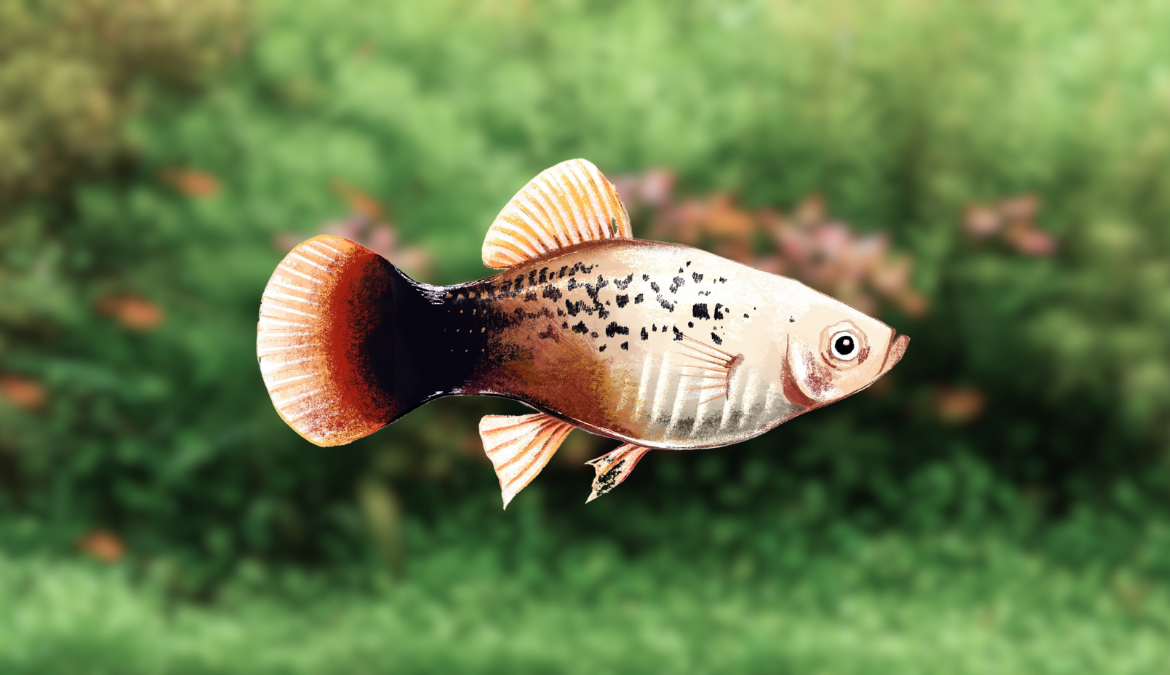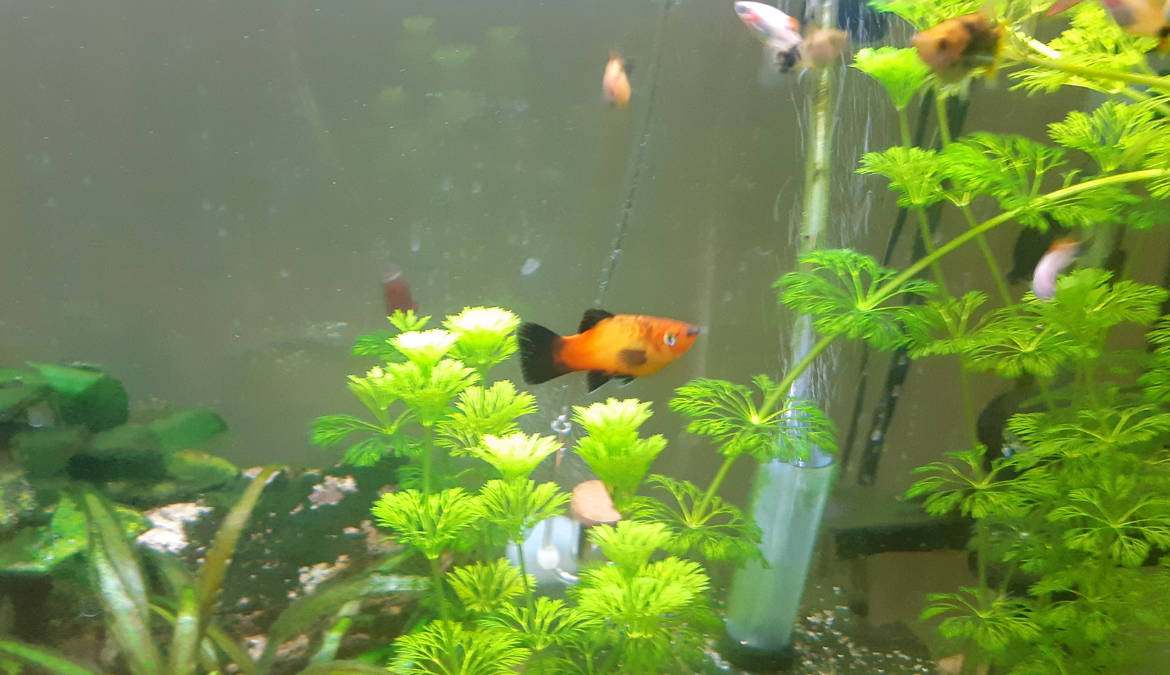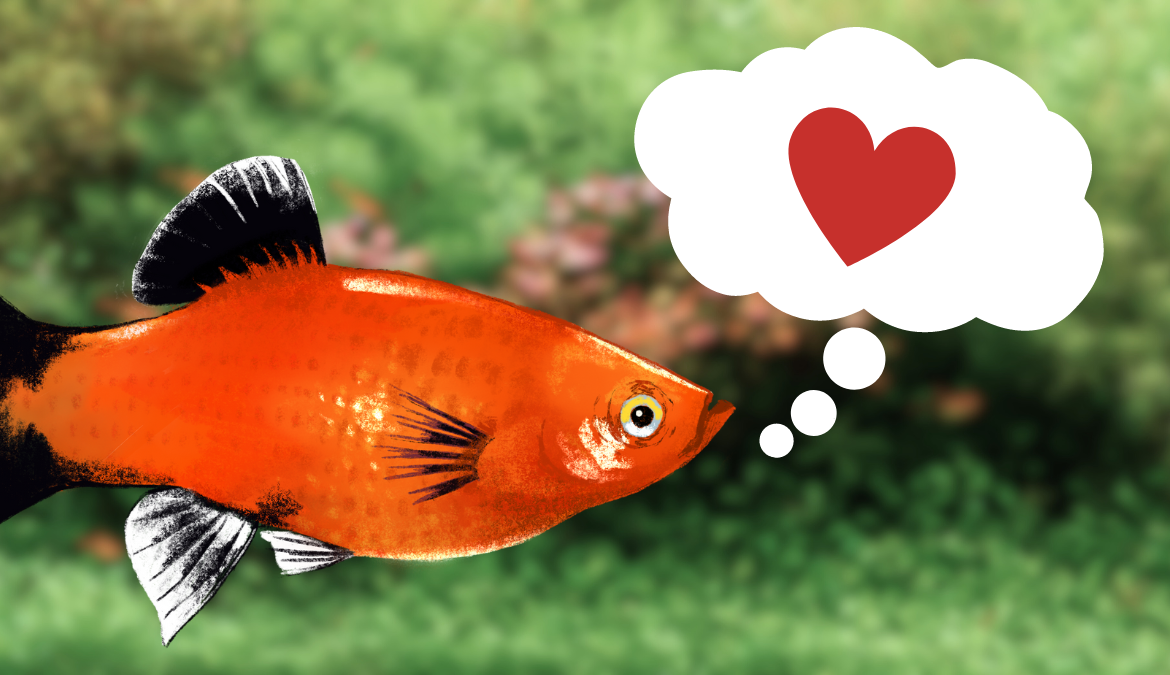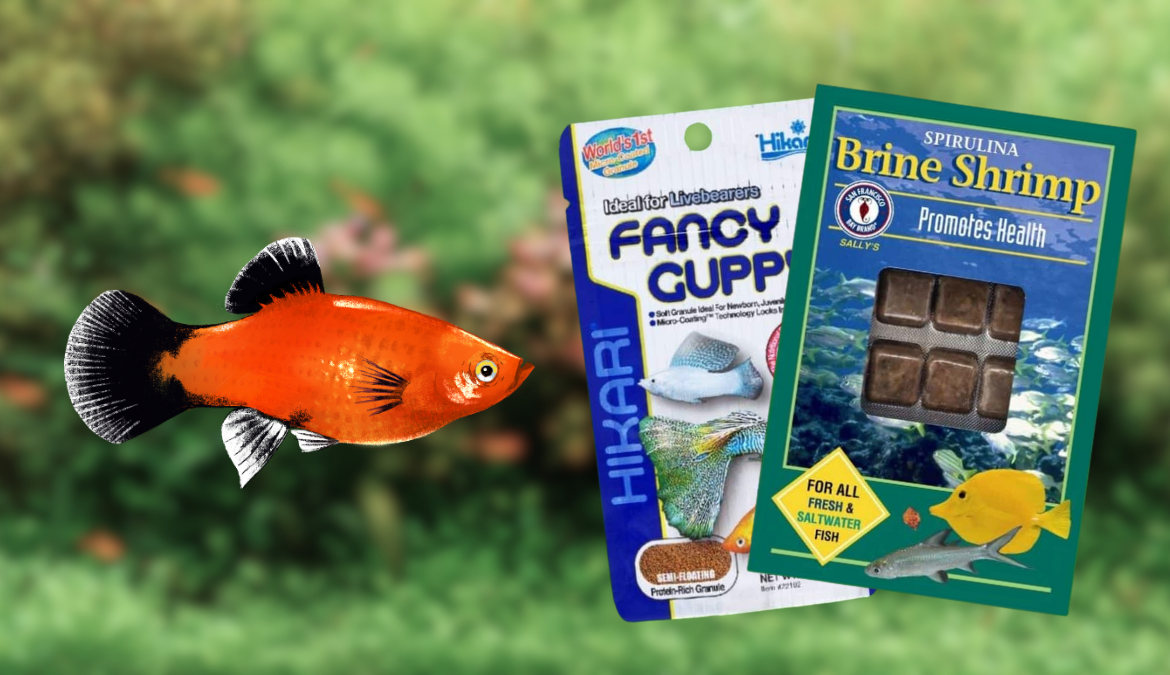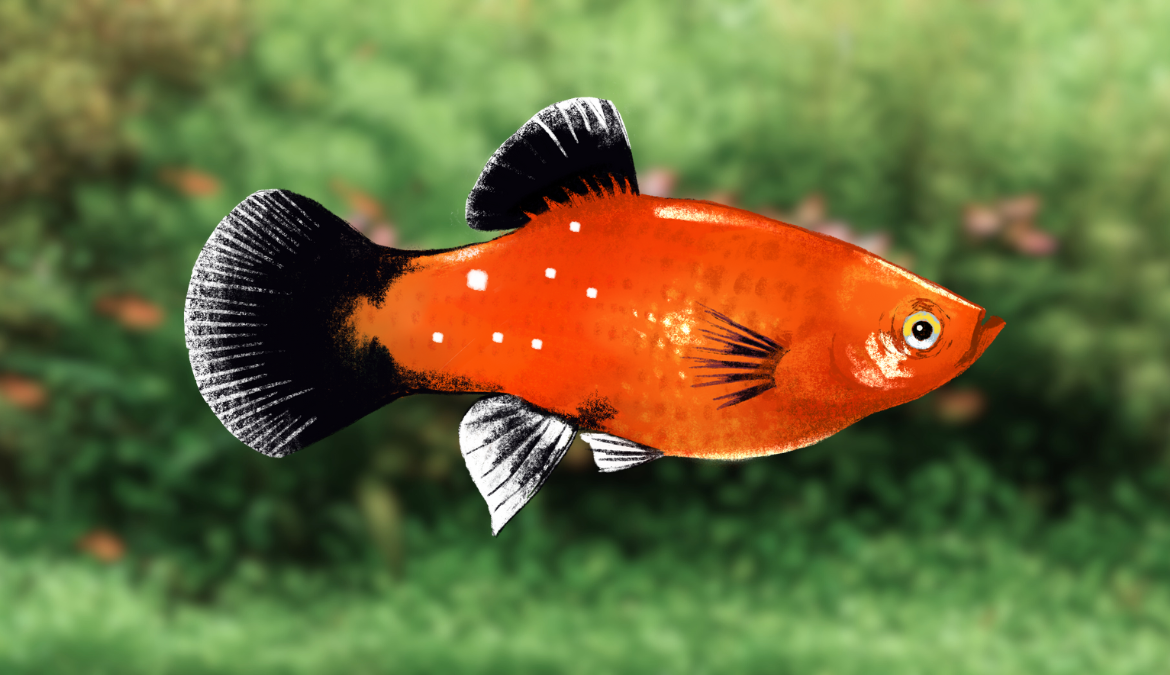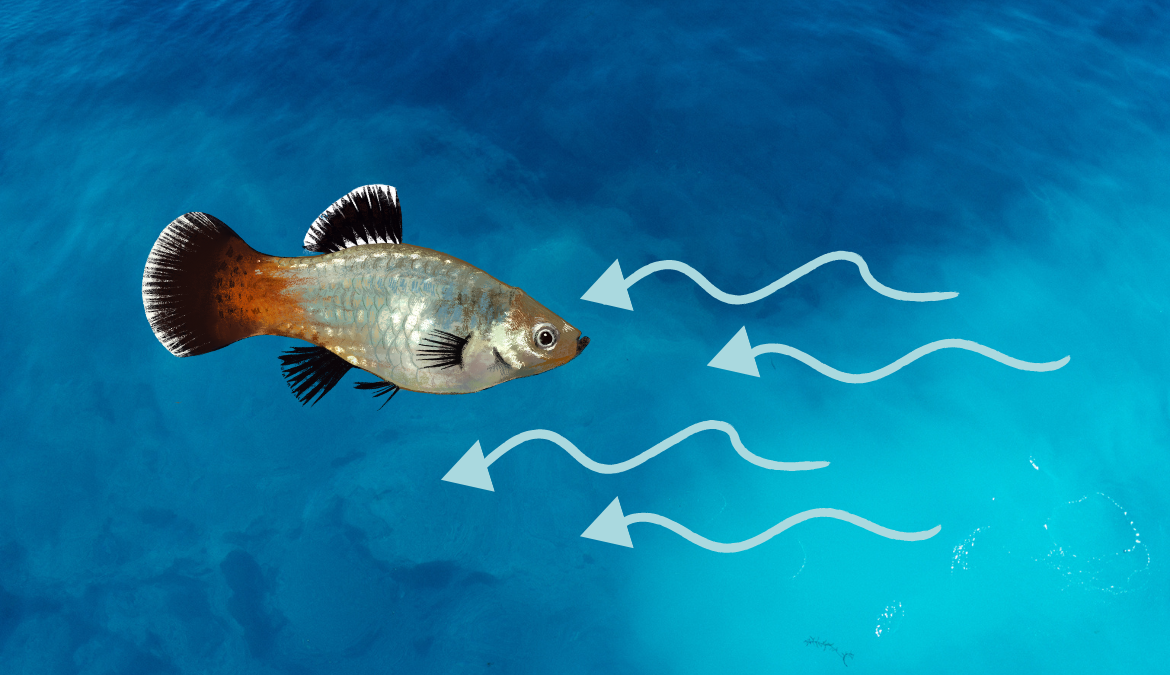Successfully add new platy fish by only choosing healthy fish from the store, preparing optimal water parameters, properly acclimatizing, closely observing behavior, and understanding dynamics between their tank mates.
A proper introduction of new platy fish to your tank is not only crucial for their survival but also influences the health and harmony of the existing fish community.
A poor introduction can lead to stress, disease, and in worst cases, fatality. As a responsible aquarist, it’s important to prioritize the well-being of your platy fish during the introduction phase.
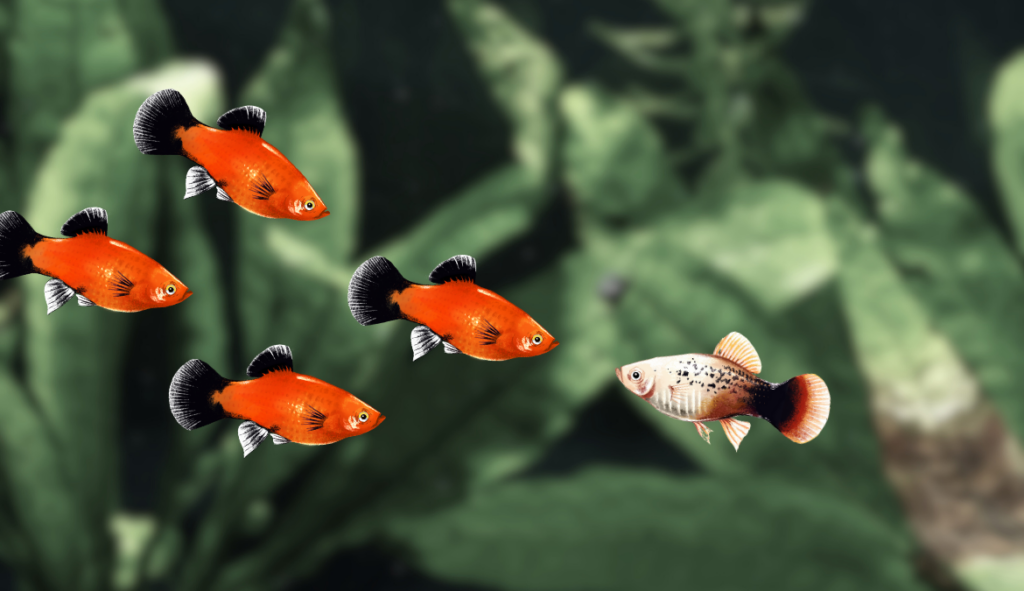
Contents
- 1 Preparing Your Tank for New Platy Fish
- 2 Selecting Healthy Platy Fish
- 3 Acclimatization: The Key to Successful Introduction
- 4 Observing Platy Fish Post-Introduction
- 5 Ensuring Peaceful Coexistence: Dealing with Aggression
- 6 Post-Introduction Care: Maintaining Optimal Conditions
- 7 Feeding Your Newly Introduced Platy Fish
Preparing Your Tank for New Platy Fish
Before introducing new platy fish into your tank, you should ensure optimal tank conditions. This involves checking and adjusting the water parameters like temperature, pH, and hardness to suit platy fish. Neglecting this can lead to your new arrivals experiencing shock, making them vulnerable to disease and stress.
Ideal water parameters for platies
| Temperature range | 75-80°F (24-27°C) |
| pH range | 7.5-8.5 pH |
| General hardness (GH range) | 10-20 dGH (178-356ppm) |
Creating enough space for the new platy fish is also crucial. Platy fish, like most species, require ample space to swim and explore. A cramped tank can lead to territorial disputes, especially if you’re dealing with aggressive platies.
I learned this the hard way when I introduced a new pair into my already populated 20-gallon tank, leading to increased aggression and stress among the group.
Many fishkeepers recommend 1 gallon of water for every inch of fish. Meaning, a 20-gallon tank cold accommodate about 10 platies, which range between 1.5-2.5 inches long.
Compatibility with existing tank mates is another critical aspect. Platy fish are peaceful and do well with other non-aggressive species. Introducing them to a tank with aggressive species can lead to continual stress and bullying.
Selecting Healthy Platy Fish
A healthy platy fish can better adjust to a new environment. When choosing new platy fish at the store, look for clear eyes, vibrant color, upright fins, and normal swimming behavior. Avoid any fish that shows signs of disease or stress, such as erratic swimming, faded colors, clamped fins, or visible spots or growths on the body.
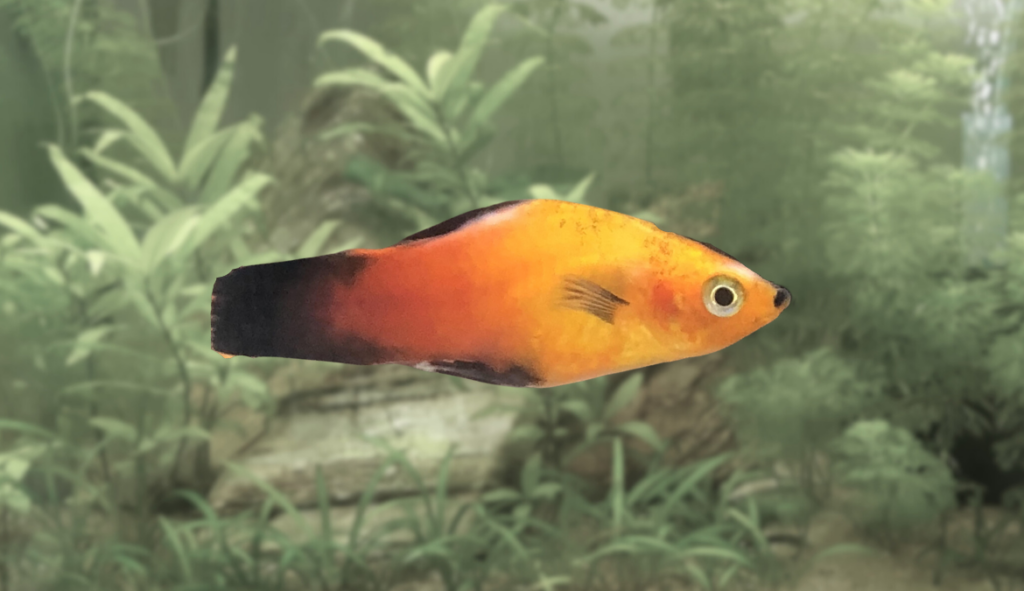
After purchasing, it’s wise to quarantine new platy fish before introducing them to your main tank. Quarantine can be a simple, separate tank where your new platy fish can acclimatize to their new environment, allowing you to monitor their health closely.
If you have the extra tank space to do so, I recommend quarantining you new platies for as long as one month before adding them to your community tank.
This measure is particularly vital because disease or parasites, if any, can become apparent during this period. Trust me, it’s much easier to treat a fish in quarantine than to handle an outbreak in your main tank!
Acclimatization: The Key to Successful Introduction
Acclimatization is the process by which you introduce your tank water to your new fish. This is critical in determining how well your new platy fish adjusts to its new home.
Abrupt changes between your quantine and community tank water parameters can cause the following issues:
- Temperature Shock: Fish are ectothermic creatures, meaning their body temperature is regulated by the environment around them. A sudden shift in water temperature can cause a form of thermal shock, leading to stress, a weakened immune system, and susceptibility to disease. Severe temperature changes can even cause cell damage and metabolic dysfunction, possibly leading to the fish’s death.
- pH Shock: Similarly, a rapid change in pH can cause physiological distress. Fish maintain a certain pH within their bodies, and if the water’s pH significantly differs from their body’s, they must work harder to regulate their internal pH. This process is called acid-base regulation, and it can lead to stress, decreased immune response, and other health issues. Severe pH shifts can cause damage to the gills and mucous membranes, potentially resulting in fatalities.
- Osmotic Shock: If the salinity (the amount of dissolved salts) of the water changes suddenly, it can lead to osmotic shock. Fish maintain a certain balance of salts and water inside their bodies. If the water’s salinity changes abruptly, it forces the fish to work harder to maintain this balance, leading to stress and possibly organ failure.
- Stress-Induced Issues: All of the above can lead to stress in fish. Stress weakens their immune system, making them more susceptible to diseases and parasites.
This applies to the store water you transport your platies home in as well.
I’ve always found the drip acclimation method to be effective:
- Float your new platy fish (still in its bag) in the tank to allow the temperature to equalize;
- Every 10 minutes or so, add 100ml of tank water to the bag; and
- Repeat this process over the course of an hour and your platy will slowly adjust to the new water chemistry.
Once acclimated, use a soft net to gently transfer the platy fish to the tank. Avoid pouring water from the bag into your tank, as it might contain contaminants or disease organisms.
Observing Platy Fish Post-Introduction
After successfully introducing the platy fish to your tank, it’s crucial to closely observe their behavior. Here are some symptoms to keep an eye out for:
- Loss of Appetite: This can be one of the first signs of stress or illness in platy fish. If they don’t show interest in food or stop eating altogether, there might be a problem.
- Lethargy: If your platy is less active than usual, or if they’re spending a lot of time at the bottom of the tank or hiding, they could be stressed or sick.
- Erratic Swimming: This could include swimming in circles, upside down, on their side, or any unusual movement that isn’t typical for your platy. This could indicate stress, swim bladder issues, or a neurological problem.
- Labored Breathing: Watch for rapid or labored gill movement, which could indicate a problem with the water quality, especially with the levels of oxygen, ammonia, or nitrites.
- Changes in Color: If your platy’s color becomes dull or if they develop any spots, patches, or other changes in their color or patterns, it could be a sign of illness.
- Physical Changes: Any changes in body shape or the development of lumps, bumps, or wounds are a cause for concern. This can also include clamped fins (where the fins are held close to the body).
- Rubbing or Scratching: If you notice your platy rubbing or scratching itself on decorations or substrate, this could be a sign of parasites or skin irritations.
- Behavioral Changes: Any sudden changes in their behavior, such as aggression towards tank mates or uncharacteristic shyness, can be signs of stress or disease.
If these signs persist beyond 48 hours post-introduction, they may indicate an underlying issue.
Remember, a healthy platy fish will actively swim around the tank, show vibrant colors, and have a good appetite. Reading up on platy behavior will help you identify normal from abnormal actions. I often refer to our guide on platy behavior to better understand my fish’s actions.
But there’s no need to worry because these issues are uncommon and you will most likely have a fun and fulfilling experience adding new fish to your tank.
Ensuring Peaceful Coexistence: Dealing with Aggression
In some cases, established fish may act aggressively towards the newcomers. In my experience, providing enough hiding spots in the tank helps alleviate this issue.
These can be live plants, caves, or decorations that offer refuge to the new platy fish. Our guide on platy hiding spots provides some great suggestions for this purpose.
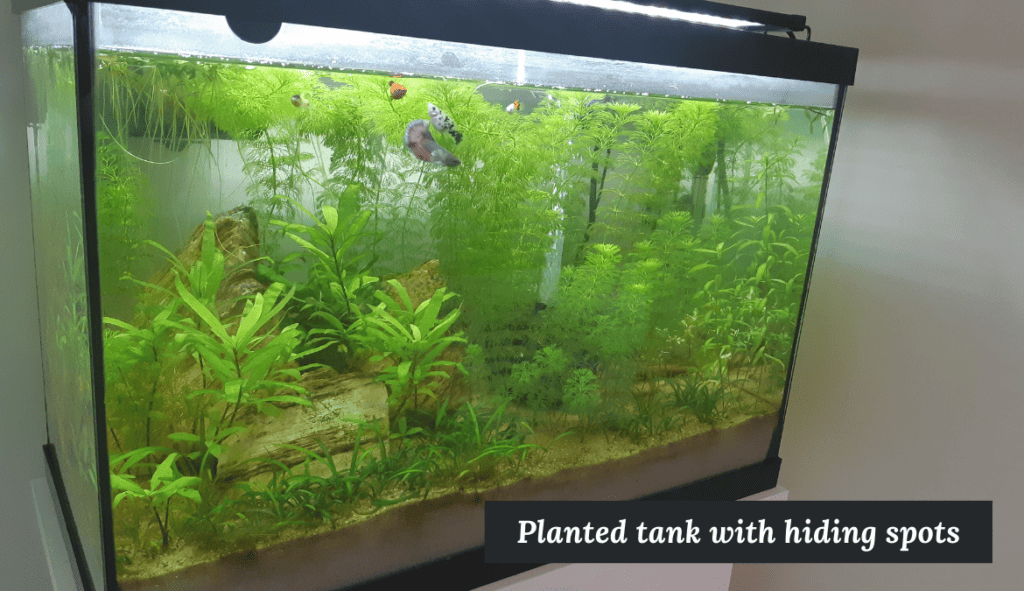
Moreover, ensuring a balanced male-to-female ratio can minimize aggression in the tank. A recommended ratio is one male to two or three females. This reduces the likelihood of males harassing females excessively, a common issue in platy fish tanks.
Post-Introduction Care: Maintaining Optimal Conditions
Post-introduction care of your platy fish is as crucial as the introduction process. It involves maintaining optimal tank conditions, providing a balanced diet, and performing regular health checks. The platy fish care guide on our website provides comprehensive advice on these aspects.
Here’s a basic list of things to monitor a couple times per week for the first few weeks after adding new fish:
- pH 7.5-8.5 pH
- Temperature (75-80°F or 24-27°C)
- Ammonia (0ppm), Nitrite (0ppm) and Nitrate (<40ppm)
If you’re within these ranges then you’re doing a great job.
Maintaining high water quality is vital for your platy fish’s health. Regular testing and water changes are key to preventing water quality issues. Also, feed your platy a varied diet including live foods to boost their health and vitality.
Feeding Your Newly Introduced Platy Fish
Feeding is another aspect that can greatly affect your platy’s wellbeing. Platies are omnivores and thrive on a varied diet. Feed them a mixture of high-quality flake food, freeze-dried food, and occasional live food treats.
Be cautious not to overfeed your fish. Overfeeding can lead to poor water quality and health issues.
You might hear other fishkeepers say that “a hungry fish is a healthy fish.”
Here’s why:
- Water Quality: Overfeeding leads to leftover food, which decomposes in the tank and contributes to poor water quality. This decomposition process increases the levels of ammonia and nitrites, toxic byproducts that can harm fish and other aquatic creatures.
- Fish Health: Overfed fish may become obese, which can lead to a variety of health issues, including fatty liver disease and decreased immunity. Obesity can also lead to difficulty swimming and decreased activity levels.
- Digestive Problems: Overfeeding can lead to bloating and constipation in fish, causing discomfort and potentially leading to more serious health problems.
- Algae Blooms: The excess nutrients from decomposing food can lead to unwanted algae blooms. Algae can take over a tank quickly, making it more difficult to maintain and potentially depriving fish and plants of necessary resources.
On the other hand, underfeeding can also have negative effects such as malnutrition and stunted growth. It’s all about finding a healthy balance and feeding the appropriate amount.
A well-fed fish will have enough food to sustain its activity levels and growth without negatively impacting water quality or its health. The best practice is to feed fish small amounts of food several times a day, only as much as they can consume in about one minute. And remember, a fish’s stomach is about the size of its eye, so small feedings are generally more than enough.


